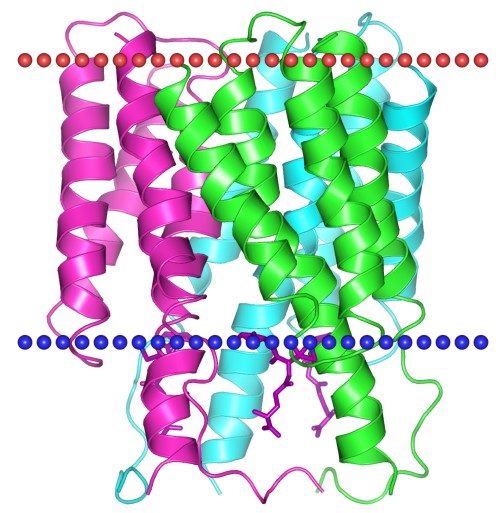Mempro™ Plant-Based MAPEG Production
Creative Biostructure has developed a comprehensive membrane protein production platform for high-quality membrane-associated proteins in eicosanoid and glutathione metabolism (MAPEG) using plant-based expression system. Our plant-based platform holds many advantages for membrane protein production, such as high yield, animal-free, low protease activity, and low endotoxin, etc.
Creative Biostructure has strong expertise in performing best membrane protein production services using various types of plant hosts, including Nicotiana benthamiana (tobacco), Medicago rativa (alfalfa), Arabidopsis thaliana (A. thaliana), potato, maize, barley and lettuce. Creative Biostructure can employ two different strategies for membrane protein production in plants: transient expression and stable transformation.
MAPEG superfamily is a class of integral membrane proteins that have been identified with diversified biological functions according to enzymatic activities, sequence motifs, and structural properties. MAPEG superfamily consist of six human proteins: 5-Lipoxygenase activating protein (FLAP), Leukotriene C4 synthase (LTC4S), Microsomal glutathione S-transferase 1 (MGST1), Microsomal glutathione S-transferase 1–like 1 (MGST1-L1), Microsomal glutathione S-transferase 2 (MGST2), and Microsomal glutathione S-transferase 3 (MGST3). Members of MAPEG superfamily enable to catalyze glutathione-dependent transformations of lipophilic substrates. It is recently reported that there are four transmembrane helices serve as a common denominator of the MAPEG superfamily. In transmembrane helix 2, a highly conserved RX3NX2E/D motif is revealed in this significant conserved sequence. Additionally, glutathione can bind the LTC4S deep in its active site pocket in a horseshoe-shaped conformation, while the carboxylate moieties in glutathione is facing into the protein pocket, thus, exposing the thiol group to the cell membrane.
 Figure 1. The structural model of Microsomal glutathione S-transferase 1. (OPM Database)
Figure 1. The structural model of Microsomal glutathione S-transferase 1. (OPM Database)
Animal-free recombinant membrane proteins expressed by Creative Biostructure are significantly important for customers concerned with experimental variables caused by trace animal components or mammalian pathogens. Notably, recombinant membrane proteins expressed by our plant system are free of animal components, serum, endotoxins and antibiotics as well as human or animal infectious agents or other endogenous mammalian contamination. Additionally, post-translational modification such as glycosylation and disulfide bonds can be introduced in plant system.
With the Mempro™ plant-based protein production platform, Creative Biostructure is capable of expressing, isolating and purifying MAPEG to facilitate the study of their biological functions. We can overcome the common difficulties encountered in cell-based expression system, such as misfolding, aggregation, inactivity, high endotoxin, poor stability and solubility, etc.
Creative Biostructure can also provide Mempro™ plant-based virus-like particles (VLPs) production services, Mempro™ animal-free recombinant protein production services and Mempro™ membrane protein production services. Please feel free to contact us for a detailed quote.
References:
P. J. Jakobsson, et al. (1999). Common structural features of MAPEG -- a widespread superfamily of membrane associated proteins with highly divergent functions in eicosanoid and glutathione metabolism. Protein Sci., 8(3):689-692.
P. J. Jakobsson, et al. (2000). Membrane-associated proteins in eicosanoid and glutathione metabolism (MAPEG). A widespread protein superfamily. Am. J. Respir. Crit. Care Med., 161(2 Pt 2):S20-4.